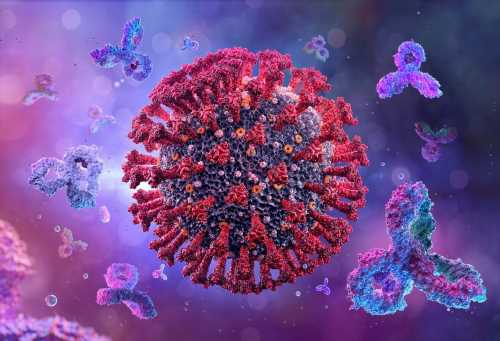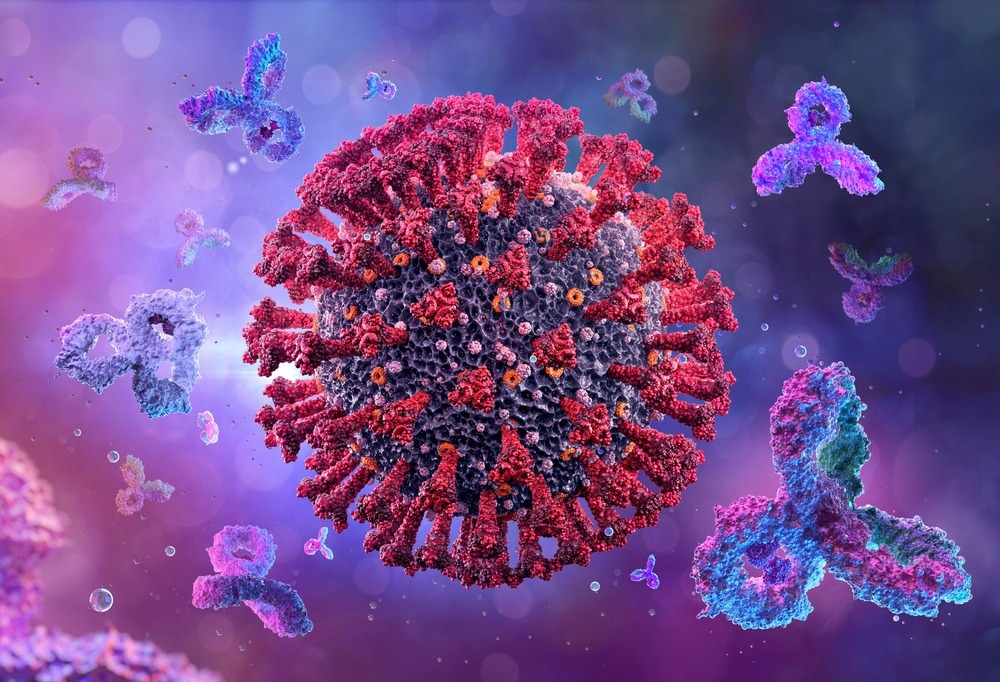
Could neutralizing SARS-CoV-2 monoclonal antibodies pre-exposure prophylaxis be cost-effective in a population at risk for severe COVID-19?
A recent study published in JAMA Network Open evaluated the cost-effectiveness of monoclonal antibodies (mAbs) as pre-exposure prophylaxis (PrEP) for coronavirus disease 2019 (COVID-19).

Background
Mass severe acute respiratory syndrome coronavirus 2 (SARS-CoV-2) vaccination campaigns have decreased the number of COVID-19 cases. Non-vaccinated individuals with inadequate immunity due to underlying comorbidities will be at a higher risk of severe illness. Clinical trials among at-risk individuals have shown that PrEP with SARS-CoV-2-neutralizing mAbs can prevent infection and alleviate hospitalization and mortality risks.
Emergency use authorization has been only granted to tixagevimab-cilgavimab, a combination of mAbs with increased half-life, for PrEP and early treatment. Although mAb PrEP is recommended for high-risk populations, uptake is slow, and besides, it is unavailable in several countries. Additionally, cost remains a barrier to implementing mAb PrEP, and concerns about effectiveness persist. The viral landscape of SARS-CoV-2 has continuously evolved, leading to delays in data availability on mAb PrEP effectiveness.
About the study
In the present study, researchers developed a decision analytic model to examine short-term health outcomes, the cost-effectiveness of mAb PrEP, and healthcare utilization costs among individuals at a high risk of severe COVID-19. The model used data from an ongoing, prospective, multi-center TURN-COVID study on anti-SARS-CoV-2 agents, including mAbs.
Adults with poor vaccination response, and therefore, at risk of severe COVID-19, received mAbs. Eligible COVID-19 patients were treated with sotrovimab or casirivimab-imdevimab as routine care. Electronic health records were accessed to collect data on baseline characteristics, medical history, vaccination status, and medications.
The team computed healthcare costs using a micro-costing approach. They included the costs of paramedical care, inpatient days, and care provided by general practitioners. Questionnaires were administered to capture healthcare utilization during 90 days post-COVID-19. The baseline strategy (no mAb PrEP) was compared with scenarios where PrEP was provided with varying model parameters (infection probability, mAb PrEP efficacy, and drug price).
Findings
The study included 636 COVID-19 patients; most individuals had an elevated risk of severe illness. About 137 patients had a body mass index (BMI) > 30 kg/m2, 60 had hematological malignant neoplasm, 152 used immunosuppressants, and 108 underwent transplantation. Overall, 18% of COVID-19 patients were admitted to the intensive care unit (ICU), and 61% required oxygen therapy.
Ambulatory COVID-19 patients incurred the least healthcare costs, with an average of $166 in the 90 days after COVID-19. Ward patients incurred more costs, with an average of $6742, while ICU patients incurred the highest costs at an average of $39,313 in the 90 days following COVID-19. Most costs (96%) were attributed to inpatient days.
The model estimated 42%, 31%, and 34% reductions in ward and ICU admissions and deaths, respectively, in the scenario of high infection probability (18%) and low effectiveness (25%). In the case of 100% efficacy, PrEP could decrease ward and ICU admissions and deaths by 70%, 97%, and 92%, respectively. Cost-saving scenarios were possible with ≥ 75% effectiveness and a low drug price of $275.
The model estimated 4,000-18,000 new infections per 100,000 individuals over 90 days among PrEP-eligible people, depending upon low (4%) or high probability of infection. High infection probability and low drug price would result in cost-saving per death averted at a minimum efficacy of 75%. However, low infection probability increased costs per death averted. With the high price of the drug ($2,750), costs per death averted ranged between $1.1 million and $3.3 million, depending upon PrEP effectiveness.
Scenarios of cost-saving per death were not observed at the high drug price. At low infection probability, high effectiveness, and low drug price, the model estimated that PrEP provision would result in cost-effective scenarios of up to $22,000 among individuals with moderate/high gains in quality-adjusted life years. At high infection probability, ≥ 75% effectiveness, and low drug price, PrEP provision would result in cost-saving scenarios for all individuals.
Conclusions
Taken together, the findings suggest that mAb PrEP provision could be cost-saving for high-risk individuals in the context of high SARS-CoV-2 infection probability if effectiveness was ≥ 75% and drug prices were $275. Cost-effective scenarios would be possible with drug prices up to $550 and effectiveness of 75%.
Overall, the results provide valuable and relevant insights for decision-makers involved in implementing PrEP. When newer mAb PrEP combinations become available, guidelines should be rapidly formulated for their implementation. Moreover, advocacy for using mAb PrEP and discussions on drug prices are essential to ensure cost-effectiveness.
- Popping, S. et al. (2023) "Health Outcomes and Cost-effectiveness of Monoclonal SARS-CoV-2 Antibodies as Pre-exposure Prophylaxis", JAMA Network Open, 6(7), p. e2321985. doi: 10.1001/jamanetworkopen.2023.21985. https://jamanetwork.com/journals/jamanetworkopen/fullarticle/2806859
Posted in: Medical Science News | Medical Research News | Disease/Infection News
Tags: Antibodies, Body Mass Index, Coronavirus, Coronavirus Disease COVID-19, covid-19, Efficacy, Healthcare, immunity, Intensive Care, Malignant, micro, Mortality, Neoplasm, Oxygen, Oxygen Therapy, Pre-Exposure Prophylaxis, Prophylaxis, Respiratory, SARS, SARS-CoV-2, Severe Acute Respiratory, Severe Acute Respiratory Syndrome, Sotrovimab, Syndrome

Written by
Tarun Sai Lomte
Tarun is a writer based in Hyderabad, India. He has a Master’s degree in Biotechnology from the University of Hyderabad and is enthusiastic about scientific research. He enjoys reading research papers and literature reviews and is passionate about writing.